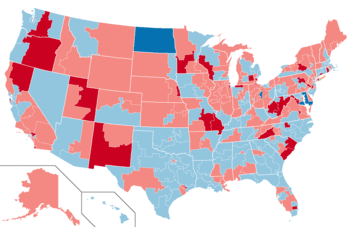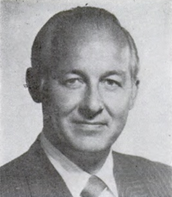United States House election, 1980
|
|
||||||||||||||||||||||||||||||||||
|---|---|---|---|---|---|---|---|---|---|---|---|---|---|---|---|---|---|---|---|---|---|---|---|---|---|---|---|---|---|---|---|---|---|---|
|
||||||||||||||||||||||||||||||||||
|
All 435 seats to the United States House of Representatives 218 seats were needed for a majority |
||||||||||||||||||||||||||||||||||
|
||||||||||||||||||||||||||||||||||

|
||||||||||||||||||||||||||||||||||
|
||||||||||||||||||||||||||||||||||
The 1980 United States House of Representatives elections was an election for the United States House of Representatives in 1980 which coincided with the election of Ronald Reagan as President. Reagan's victory also allowed many Republican House candidates to secure election, and the Republicans gained a net of 35 seats from the Democratic Party. The Democrats nonetheless retained a significant majority, unlike the Senate elections, where Republicans gained control of the chamber. However, many Democratic congressmen from the south (known as "Boll weevils") frequently took conservative stances on issues, allowing Republicans to have a working ideological majority for some of President Reagan's proposals during his first two years in office.
This election marked the first time since Reconstruction that Republicans were given a sizable majority of Representatives from a Deep South state (South Carolina). It was also the first time that the new Libertarian Party received the third-largest share of the popular vote in both chambers of Congress.
Summary of the November 4, 1980 United States House of Representatives election results
Source: Election Statistics - Office of the Clerk
...
Wikipedia


